Welcome to the world of Playful Farm Science Activities for Preschoolers!
Engaging young minds in hands-on exploration of the natural world can spark their curiosity, foster a love for learning, and deepen their understanding of various scientific concepts.
The farm provides a wonderful setting for preschoolers to discover the wonders of plants, animals, and the environment around them.
In this collection of exciting science activities, we will delve into exciting experiments, observations, and investigations that are both educational and fun.
Let the farm become their outdoor laboratory, where they can learn, play, and marvel at the wonders of nature.
Activity 1: Seed Exploration and Germination

Materials needed: Assorted seeds (e.g., sunflower, pumpkin, corn), small pots or cups, potting soil, water, and magnifying glasses.
Description: Begin this activity by gathering a variety of seeds commonly found on a farm. Show the preschoolers the different shapes, sizes, and colors of the seeds. Allow them to explore the seeds using their senses and examine them closely with magnifying glasses. Discuss the concept of germination and how seeds grow into plants. Provide each child with a small pot or cup filled with potting soil and help them plant a seed of their choice. Encourage them to water the seeds regularly and observe changes in the soil over time. Discuss the importance of sunlight and water for plant growth and watch as the seeds germinate and sprout.
Benefits: This activity introduces preschoolers to the life cycle of plants and helps them understand the process of seed germination. It promotes sensory exploration, and fine motor skills, and encourages responsibility as they care for their plants.
Activity 2: Animal Tracks Investigation
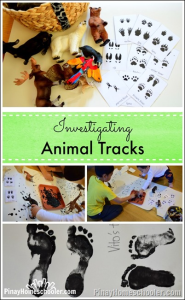
Materials needed: Clay or playdough, animal track identification guide or pictures, outdoor space.
Description: Take the preschoolers on a walk around the farm to search for animal tracks. Explain that animals leave footprints or tracks behind as they move. Encourage the children to look closely at the ground and identify different tracks they come across. If possible, use clay or playdough to make imprints of the tracks they find. After returning indoors, provide them with animal track identification guides or pictures and help them match the tracks they observed to the corresponding animals. Discuss the animals’ habitats and their unique footprints.
Benefits: This activity enhances observation skills, promotes outdoor exploration, and introduces children to animal diversity and habitats. It encourages critical thinking as they match tracks to animals and stimulates their curiosity about the natural world.
Related: 20 Best No Spend Weekend Activities With Family
Activity 3: Weather Watchers
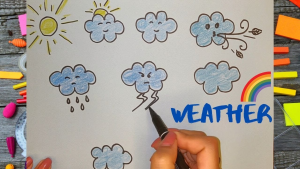
Materials needed: Weather chart (with symbols for sunny, cloudy, rainy, and windy), markers, paper, and pencil.
Description: Create a weather chart with symbols representing different weather conditions. Hang it up in a visible spot. Each day, engage the preschoolers in a discussion about the current weather. Have them observe and describe the sky, temperature, and any noticeable changes. Ask them to choose the appropriate weather symbol and draw it on the chart using markers. Encourage them to keep a daily weather journal, where they can draw pictures or write simple descriptions of the weather. At the end of the week, review the observations and discuss any patterns or changes they noticed.
Benefits: This activity helps preschoolers develop observation and recording skills while fostering an understanding of weather patterns. It encourages communication and vocabulary development as they describe and discuss the weather.
Activity 4: Butter Making
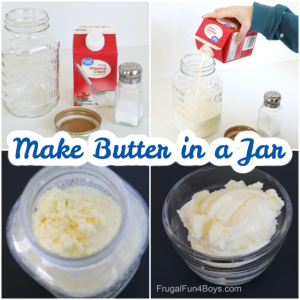
Materials needed: Heavy cream, a clean glass jar with a lid, a pinch of salt (optional), and farm-themed music (optional).
Description: Begin by explaining to the preschoolers that milk comes from cows on the farm and is used to make various dairy products. Pour some heavy cream into a clean glass jar, ensuring it is only filled about halfway. Add a pinch of salt if desired. Securely close the jar with the lid. Encourage the children to shake the jar vigorously, passing it around and taking turns. After a few minutes, the cream will transform into butter. Open the jar and show the preschoolers the butter they made. Spread the butter on crackers and enjoy as a snack, accompanied by farm-themed music if desired.
Benefits: This activity introduces children to the concept of food production on the farm and demonstrates the transformation of liquid to solid. It promotes sensory exploration, and fine motor skills, and provides a delicious hands-on experience.
Related: 20 Easy Frog Crafts for Preschoolers
Activity 5: Planting a Vegetable Garden
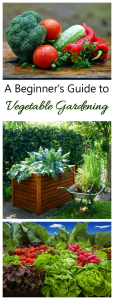
Materials needed: Vegetable seeds (e.g., tomatoes, carrots, lettuce), gardening tools (child-sized shovel, watering can), garden beds or containers, and potting soil.
Description: Begin by discussing the importance of vegetables in a healthy diet and where they come from. Invite the preschoolers to help prepare a small vegetable garden bed or containers for planting. Assist them in digging small holes or furrows for the seeds. Show them how to plant the seeds at the appropriate depth and space them apart. Provide guidance on watering the plants and discuss the need for sunlight, water, and care to help the vegetables grow. Encourage the children to monitor the garden regularly, noting any changes in the plants and documenting their growth with drawings or photographs.
Benefits: This activity allows preschoolers to experience the process of planting and nurturing plants while learning about the source of vegetables. It promotes responsibility, patience, and an understanding of plant needs. It also encourages a connection to nature and healthy eating habits.
Activity 6: Farm Animal Sounds
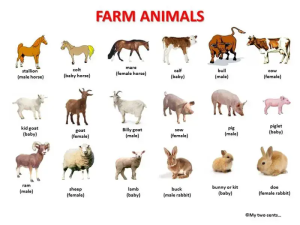
Materials needed: Pictures or figurines of farm animals.
Description: Gather a collection of pictures or figurines representing different farm animals such as cows, pigs, chickens, and sheep. Show each animal to the preschoolers and discuss their characteristics and the sounds they make. Encourage the children to imitate the sounds of the animals and have fun guessing and mimicking together. Play a game where you make the sound of an animal, and the children try to identify which animal it is. This activity promotes auditory discrimination, creativity, and vocabulary development.
Benefits: This activity introduces preschoolers to the sounds and characteristics of farm animals, enhancing their knowledge and language skills. It encourages imagination and auditory perception, making learning enjoyable.
Activity 7: Egg-cellent Egg Experiments

Materials needed: Eggs (hard-boiled and raw), vinegar, clear containers, magnifying glasses, and markers.
Description: Begin by discussing the different types of eggs found on the farm, focusing on chicken eggs. Show the preschoolers both hard-boiled and raw eggs and ask them to describe the differences they observe. Set up an experiment by placing a raw egg in a clear container filled with vinegar. Ask the children to predict what they think will happen to the egg. Observe the egg daily and encourage the children to describe any changes they notice. After a few days, carefully remove the egg from the vinegar and let the children explore it with magnifying glasses. Discuss the effect of the vinegar on the eggshell and why it became soft. You can also provide markers for the children to decorate the hard-boiled eggs.
Benefits: This activity promotes scientific inquiry, observation skills, and critical thinking. It allows preschoolers to explore the properties of eggs and understand the concept of chemical reactions. It also provides a hands-on experience and stimulates curiosity.
Activity 8: Farm Sensory Bin

Materials needed: Plastic bin or large container, dried corn kernels, toy farm animals, small shovels or scoops, farm-themed objects (e.g., mini tractors, hay bales, fences), optional: small toy pond or watering can.
Description: Create a sensory bin by filling a plastic bin or large container with dried corn kernels. Add toy farm animals, small shovels or scoops, and other farm-themed objects. You can also include a small toy pond or watering can for additional sensory play. Invite the preschoolers to explore the sensory bin, encouraging them to dig, scoop, and bury the objects in the corn kernels. Discuss the textures, sounds, and smells they experience during the activity. Encourage imaginative play and storytelling using farm animals and objects.
Benefits: This activity stimulates sensory exploration and fine motor skills. It encourages imaginative play, language development, and creativity. The sensory bin provides a tactile and interactive learning experience centered around farm-themed objects.
Activity 9: Weather Vane Creation

Materials needed: Craft sticks, cardboard, markers, scissors, pin or thumbtack, straw or pencil, glue, and pictures of different weather symbols (optional).
Description: Begin by discussing the concept of wind and its role in determining weather patterns. Help the preschoolers create a weather vane by gluing four craft sticks together to form a cross shape. Cut out a square piece of cardboard and glue it to the top of the craft stick cross. Let the children decorate the cardboard with weather symbols or drawings. Attach a pin or thumbtack to the center of the cardboard. Slide a straw or pencil through the pin and attach it securely. Take the children outside and place the weather vane in an open area. Observe the direction of the wind and discuss how it changes throughout the day. The weather vane will point in the direction the wind is blowing.
Benefits: This activity introduces preschoolers to the concept of wind and its relationship to weather. It promotes creativity, fine motor skills, and understanding of directional concepts. It encourages outdoor exploration and observation skills.
Activity 10: Milk Carton Greenhouses
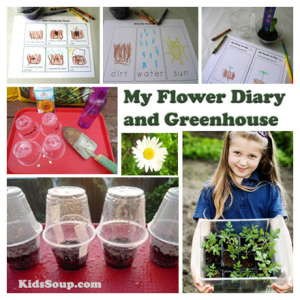
Materials needed: Clean milk cartons (cut in half), potting soil, seeds (e.g., beans, radishes, sunflowers), and water.
Description: Explain to the preschoolers that plants need warmth and protection to grow. Show them how to make mini greenhouses using clean milk cartons cut in half. Help the children fill the bottom halves of the cartons with potting soil and plant seeds according to the package instructions. Water the soil gently, and then cover each carton with its matching top half to create a greenhouse effect. Place the milk carton greenhouses in a sunny spot and remind the children to water them regularly. Encourage them to observe the changes in the plants as they grow and discuss the importance of the greenhouse environment.
Benefits: This activity allows preschoolers to observe plant growth up close and understand the concept of a greenhouse. It promotes responsibility, nurturing skills, and an understanding of the needs of living organisms. It also provides a sense of ownership as the children care for their own mini gardens.
Activity 11: Farm Animal Sorting

Materials needed: Pictures or figurines of different farm animals, a large tray or table, sorting containers (e.g., small baskets, cups, bowls), farm animal labels or pictures (optional).
Description: Introduce the preschoolers to a variety of farm animals using pictures or figurines. Place the farm animal items on a large tray or table. Provide sorting containers labeled with different categories such as “Mammals,” “Birds,” or “Size.” Alternatively, you can use pictures or labels to indicate the sorting categories. Encourage the children to sort the farm animals into the appropriate containers based on the given criteria. Discuss their reasoning behind each placement and facilitate discussions about the characteristics and features of the animals.
Benefits: This activity promotes categorization skills, logical thinking, and animal recognition. It enhances vocabulary development, and critical thinking, and encourages discussions and social interactions among preschoolers.
Activity 12: Farm-Themed Sensory Bottles
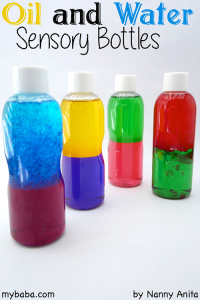
Materials needed: Empty plastic bottles (with secure lids), water, vegetable oil, food coloring, small farm-themed objects (e.g., mini farm animals, corn kernels, hay), optional: glitter or sequins.
Description: Help the preschoolers create farm-themed sensory bottles by filling empty plastic bottles with water and a splash of vegetable oil. Add a few drops of food coloring to create the desired colors. Invite the children to place small farm-themed objects into the bottles, such as mini farm animals, corn kernels, or hay. Optionally, you can add glitter or sequins for extra visual interest. Seal the bottles securely and ensure they are tightly closed. Encourage the children to shake, roll, and explore the sensory bottles, observing the movement of the objects and colors within the liquid.
Benefits: This activity stimulates sensory exploration, fine motor skills, and visual perception. It encourages calmness and relaxation while providing a hands-on sensory experience centered around farm-themed objects.
Activity 13: Farm Field Trip
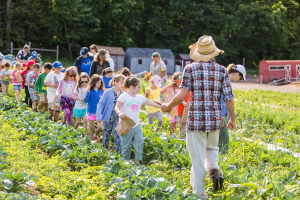
Materials needed: Transportation (if applicable), permission slips, and farm visit arrangements.
Description: Organize a field trip to a local farm, ensuring necessary permissions and transportation arrangements are in place. Prior to the visit, discuss with the preschoolers what they might expect to see and learn at the farm. On the day of the trip, guide the children through the farm, pointing out different animals, crops, and farm equipment. Encourage them to ask questions and engage in conversations with farmers or staff members. Discuss the farm’s functions, the role of farmers, and the importance of agriculture in our lives. After the visit, reflect on the experience and encourage the children to share their favorite moments or newfound knowledge.
Benefits: This activity provides a firsthand experience of farm life, fostering a deeper understanding and appreciation for agriculture. It enhances observation skills, social interactions, and the ability to ask questions. It also encourages a connection with the local community and promotes experiential learning.
Activity 14: Farm-themed Scavenger Hunt

Materials needed: Farm-themed scavenger hunt checklist or cards (with pictures or words), pencils, or markers.
Description: Create a farm-themed scavenger hunt for the preschoolers to enjoy. Prepare a checklist or individual cards with pictures or words representing various farm-related items or elements. Examples may include a red barn, a cow, a tractor, a vegetable patch, or a scarecrow. Distribute the checklists or cards to the children, along with pencils or markers. Guide them around the farm or designated play area as they search for the items on their lists. Encourage them to check off or mark the items they find. Celebrate their success and discuss their discoveries afterward.
Benefits: This activity promotes observation skills, attention to detail, and perseverance. It encourages physical activity, cooperation, and engagement with the farm environment. It also enhances vocabulary development and knowledge about farm-related items.
Activity 15: Farm Animal Sounds Matching
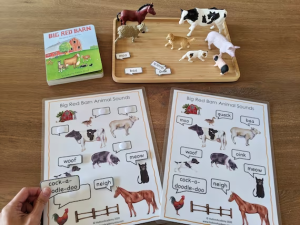
Game
Materials needed: Farm animal picture cards or figurines, audio recordings of farm animal sounds.
Description: Prepare a set of farm animal picture cards or figurines, representing various farm animals. Gather audio recordings or videos of farm animal sounds. Play the recordings of the animal sounds for the preschoolers and ask them to match the sound to the corresponding animal picture or figurine. Encourage discussion about the different sounds and characteristics of each animal. This activity promotes auditory discrimination, memory skills, and animal recognition.
Benefits: This activity enhances listening skills, memory recall, and animal recognition. It encourages critical thinking and helps preschoolers develop connections between sounds and their corresponding sources.
Activity 16: Farm Equipment Exploration

Materials needed: Pictures or models of farm equipment (e.g., tractor, plow, harvester), toy vehicles (optional).
Description: Introduce preschoolers to various farm equipment used on a farm. Show them pictures or models of tractors, plows, harvesters, and other machinery. Discuss the purposes of each piece of equipment and how they help with farming tasks. Optionally, provide toy vehicles for the children to play with, mimicking the movements and functions of the farm equipment. This activity promotes imagination, fine motor skills, and knowledge of farm machinery.
Benefits: This activity introduces preschoolers to the tools and machinery used on farms, fostering an understanding of agricultural practices. It encourages imaginative play, fine motor skills, and vocabulary development.
Activity 17: Farm-themed Storytime
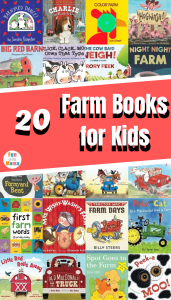
Materials needed: Farm-themed storybooks.
Description: Set up a cozy reading corner and select a variety of farm-themed storybooks suitable for preschoolers. Gather the children and read aloud the stories, engaging them in the narratives and asking questions along the way. Discuss the characters, farm settings, and lessons or messages conveyed in the stories. Encourage the children to express their thoughts and feelings about the stories and relate them to their own experiences or knowledge. This activity promotes language development, listening skills, and imagination.
Benefits: This activity fosters a love for reading and storytelling. It enhances language skills, comprehension, and imagination. It provides an opportunity for discussion and critical thinking.
Activity 18: Farm Field Journal
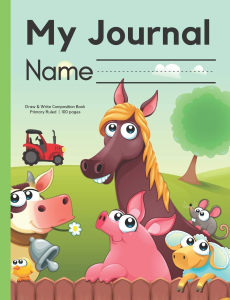
Materials needed: Blank notebooks or journals, pencils, colored pencils or markers.
Description: Provide each preschooler with a blank notebook or journal to create their own farm field journal. Take the children on a visit to a farm or utilize farm-related activities in a simulated farm setting. Encourage them to make observations, draw pictures, and write about their experiences in the journal. They can record the animals they saw, the crops they explored, or any interesting details they observed. This activity promotes observational skills, writing abilities, and creativity.
Benefits: This activity encourages journaling, observation, and documentation skills. It fosters a sense of ownership and pride in creating a personal record of farm experiences. It also promotes reflection and language development.
Activity 19: Farm-themed Number Recognition
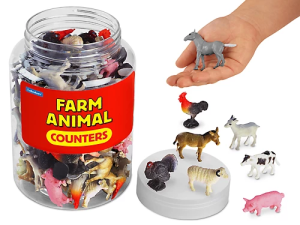
Materials needed: Farm animal picture cards with numbers, and manipulatives (e.g., plastic farm animals, counters).
Description: Create farm animal picture cards, each depicting a different number (e.g., 1-10). Spread the cards out on a table or the floor. Provide manipulatives such as plastic farm animals or counters. Instruct the preschoolers to count the number of objects on each card and place the corresponding number of manipulatives next to it. Encourage them to say the numbers aloud as they count and match them. This activity promotes number recognition, counting skills, and one-to-one correspondence.
Benefits: This activity introduces number recognition and counting in a farm-themed context. It enhances visual perception, fine motor skills, and mathematical concepts.
Activity 20: Farm-inspired Artwork
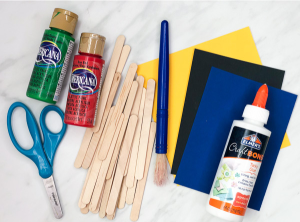
Materials needed: Construction paper, glue, scissors, colored pencils or markers, farm-themed craft materials (e.g., cotton balls, hay, popsicle sticks).
Description: Provide a variety of art materials and craft supplies to the preschoolers. Encourage them to create farm-inspired artwork using their imagination and the provided materials. They can make farm animal collages using construction paper and cut-out pictures or draw their own farm scenes using colored pencils or markers. They can also use craft materials like cotton balls for sheep, hay for haystacks, or popsicle sticks for fences. Display their artwork to create a farm-themed art gallery.
Benefits: This activity promotes creativity, fine motor skills, and artistic expression. It allows preschoolers to explore different materials and textures while creating their own farm-themed masterpieces. It also provides a sense of pride and accomplishment in their artwork.


